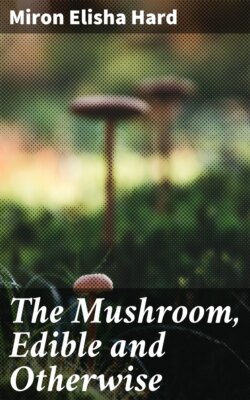Читать книгу The Mushroom, Edible and Otherwise - Miron Elisha Hard - Страница 38
На сайте Литреса книга снята с продажи.
Amanitopsis vaginata. Bull.
ОглавлениеTable of Contents
The Sheathed Amanitopsis. Edible.
Figure 30.—Amanita vaginata. One-third natural size. Notice a portion of the volva adhering to the cap.
Vaginata—from vagina, a sheath. The plant is edible but should be used with very great caution. It is quite variable in color, ranging from white to mouse color, brownish or yellowish.
The pileus is ovate at first, bell-shaped, then convex and expanded, thin, quite fragile, smooth, when young with a few fragments of the volva adhering to its surface, deeply and distinctly striate.
The gills are free, white, then pallid, ventricose, broadest in front, irregular. The flesh is white, but in the darker forms stained under the easily separating skin. The spores are white and nearly round, 7–10µ.
The stem is cylindrical, even or slightly tapering upward, hollow or stuffed, smooth or sprinkled with downy scales, not bulbous at the base.
The volva is long, thin, fragile, forming a permanent sheath which is quite soft and readily adheres to the base of the stem.
The striations on the margin are deep and distinct, as in the Orange Amanita. The cup is quite regular but it is fragile, easily broken and usually deep in the ground. In some plants a slight umbo is developed at the center.
The mushroom-eater wants to distinguish very carefully between this species and Amanita spreta, which is very poisonous.
It is found in woods, in open places where there is much vegetable mould, sometimes found in stubble and pastures, especially in meadows under trees. Found from June to November.
The plant varies considerably in color, and there are several varieties, separable by means of their color:
A. vaginata, var. alba. The whole plant is white.
A. vaginata var. fulva. The cap tawny yellow or pale ochraceous.
A. vaginata var. livida. The cap leaden brown; gills and stem tinged with smoky brown.
Photo by C. G. Lloyd.
Plate V. Figure 31.—Amanita vaginata
